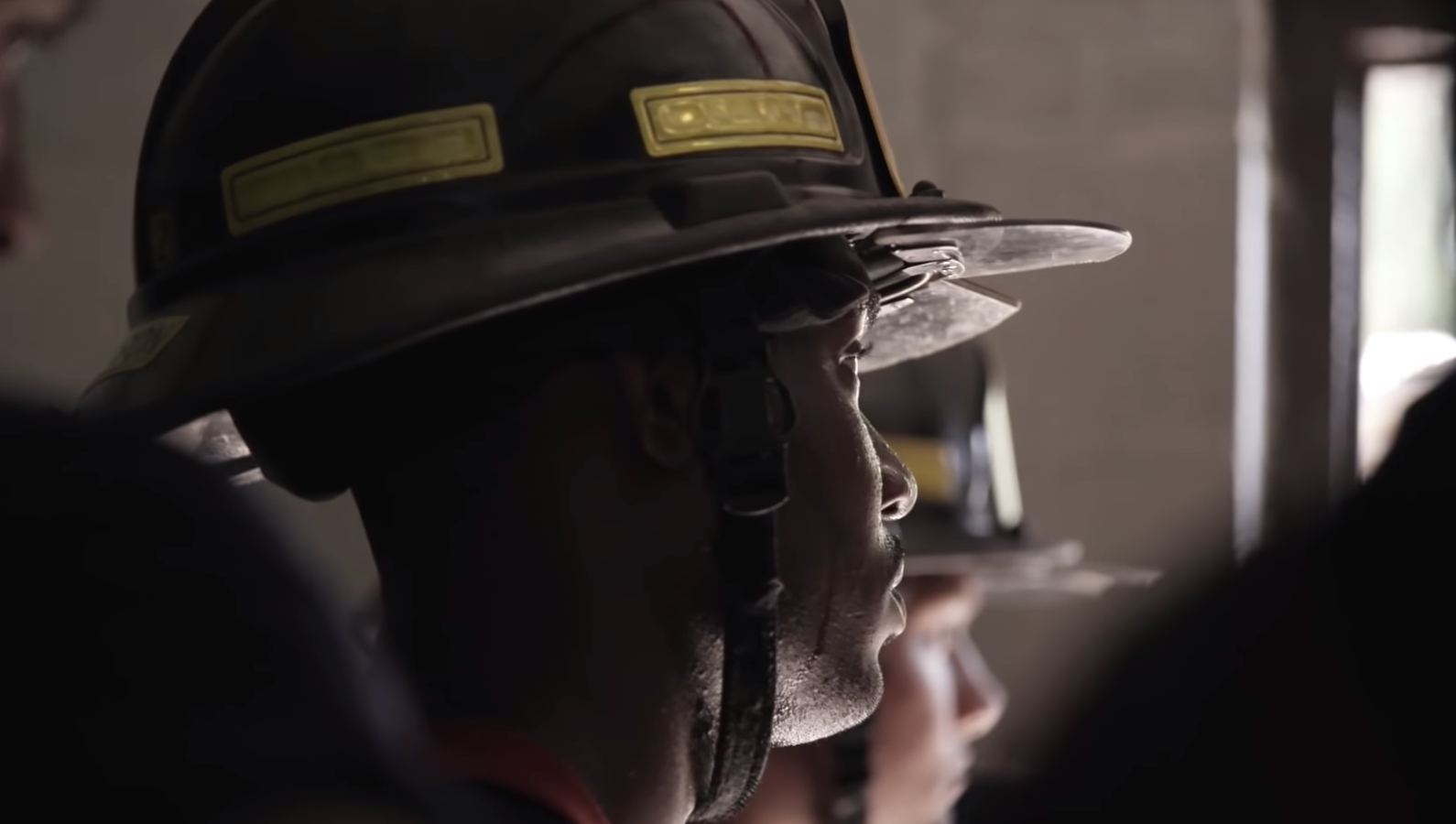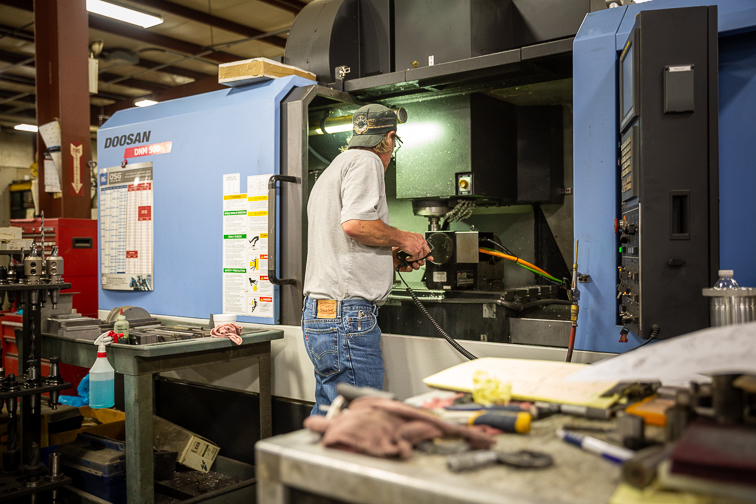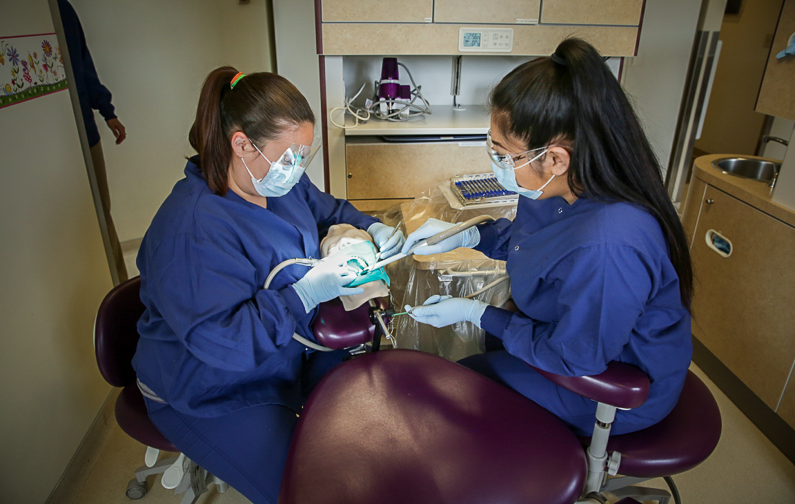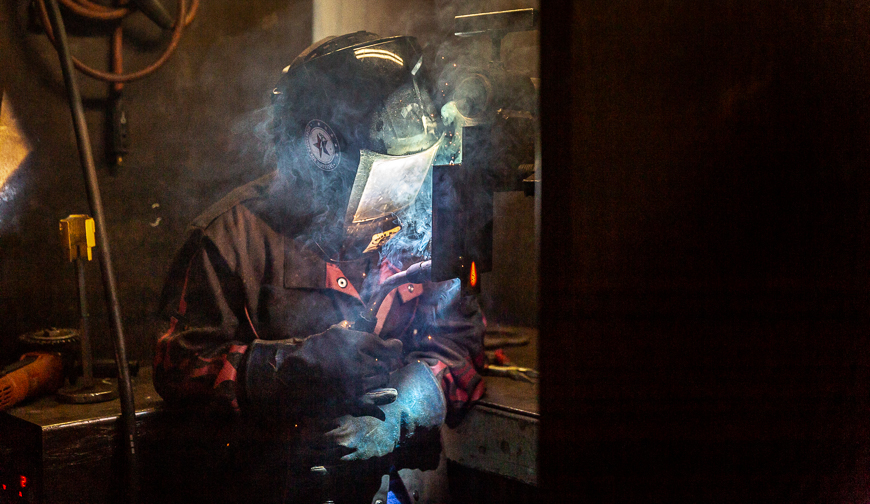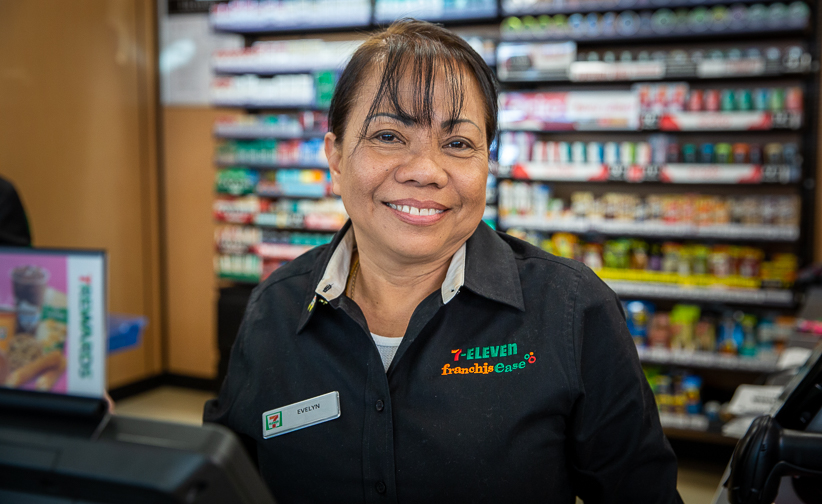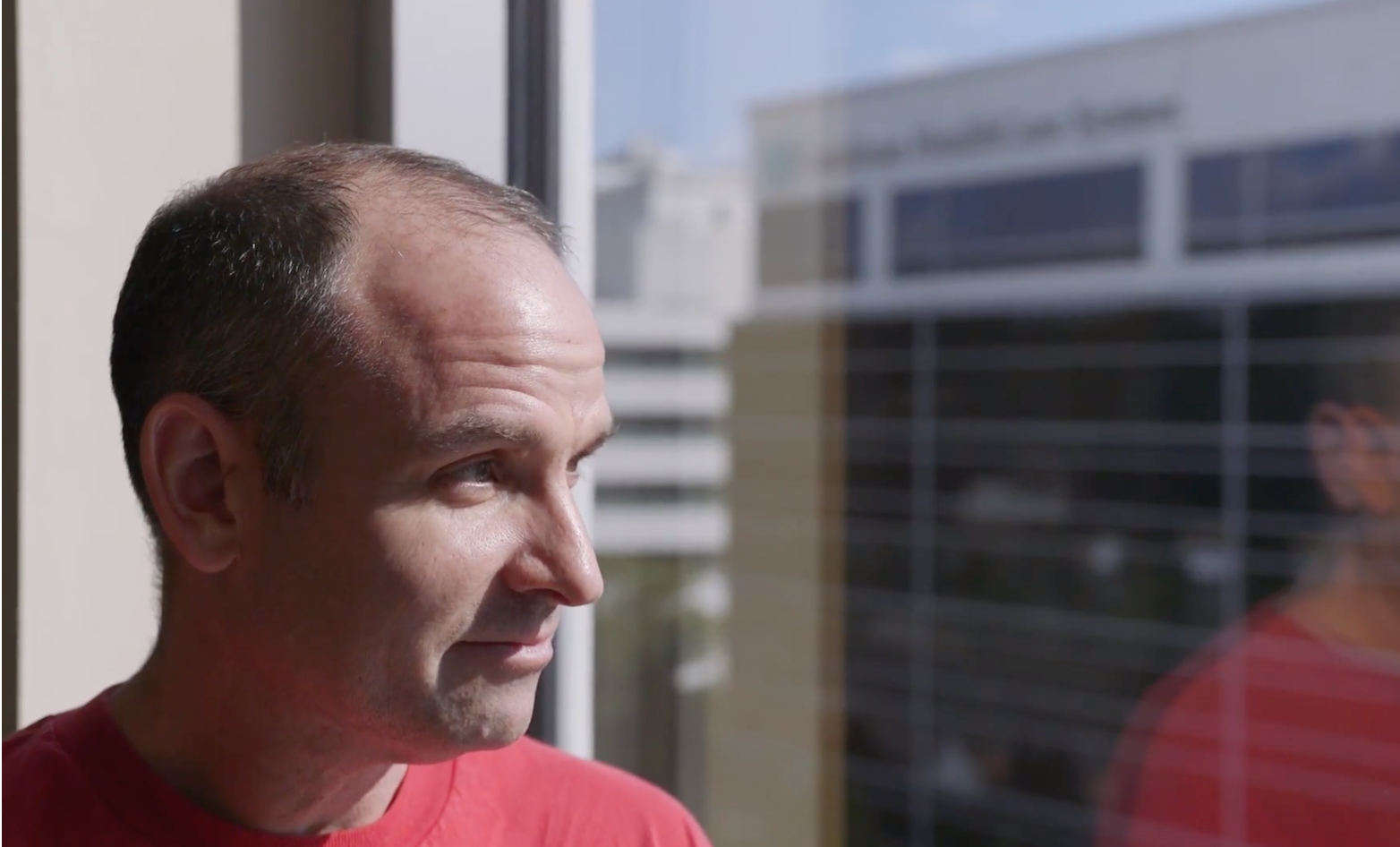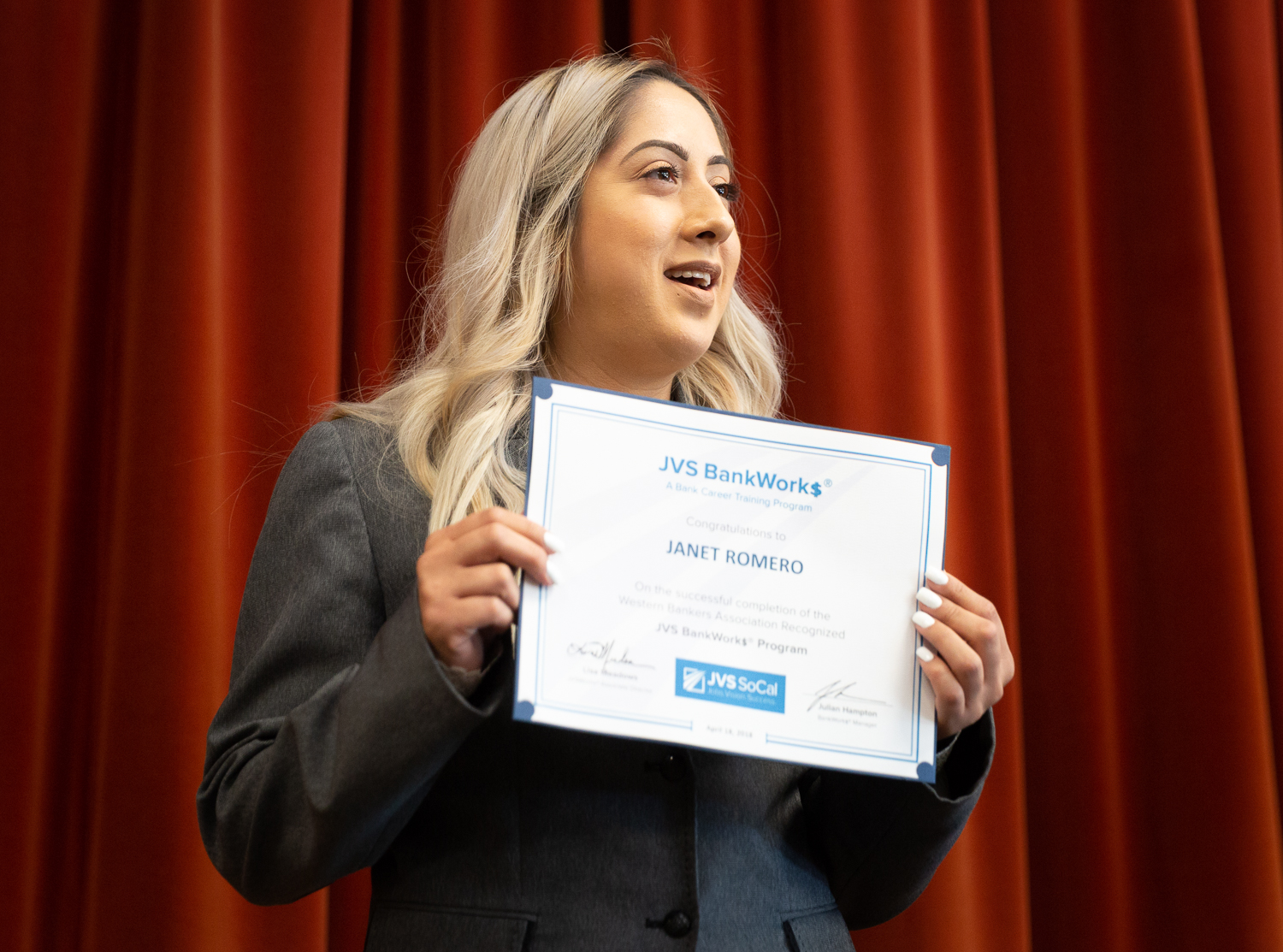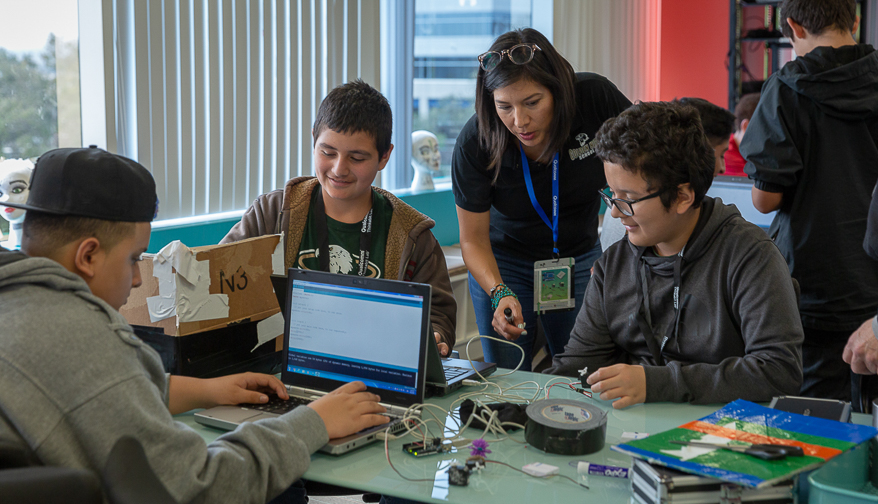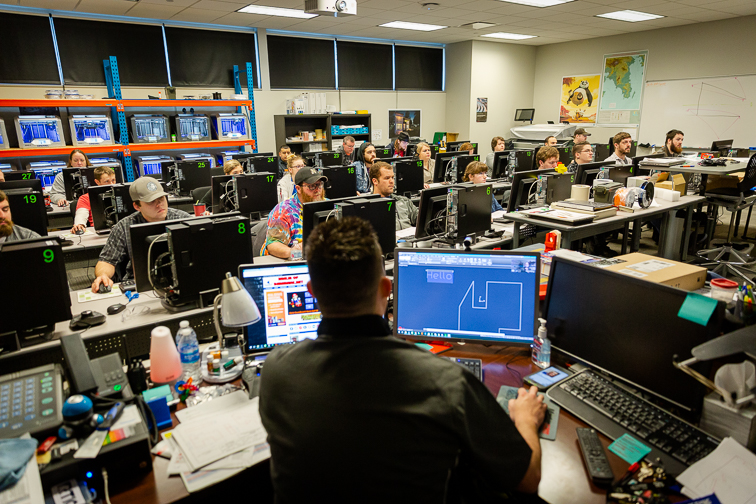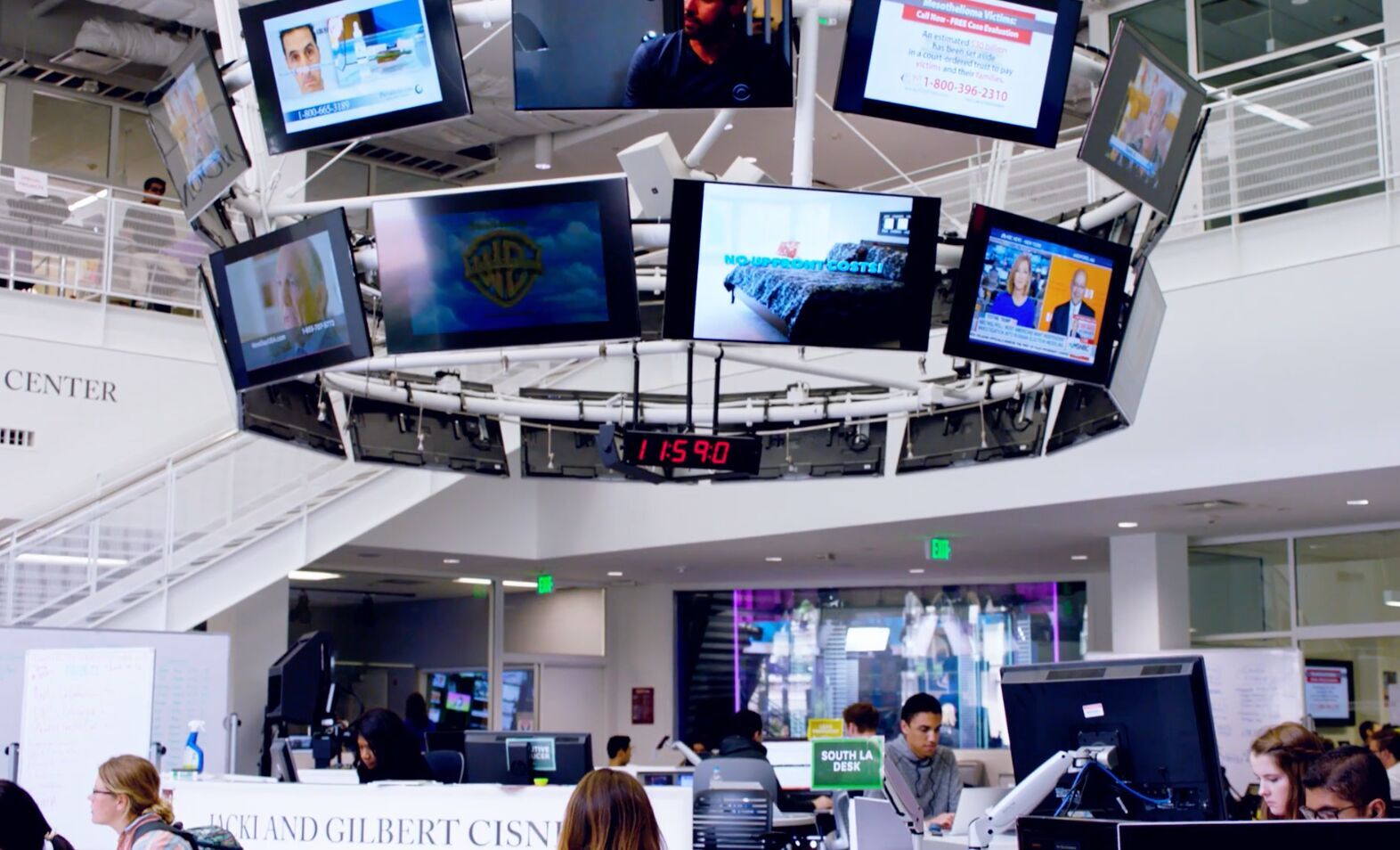Formerly incarcerated. It is a title that follows the check mark on the job application question “Have you been convicted of a criminal offense?”
The Last Mile (TLM) offers a chance to attach more relevant and useful titles to their names: coder, software engineer or front-end web designer. Better titles that define a person by their skills rather than a mistake from their past.
From its startup origins at California’s San Quentin State Prison in 2010 to its first out-of-state expansion at the Indiana Women’s Prison this year, The Last Mile is carving out its unique spot among prison rehabilitation programs. TLM gives inmates the software and entrepreneurship training that could make them undeniable in a labor market with a demand for tech workers.
Charles Anderson can call himself a web developer today because TLM gave him the vision of a life beyond his time at Ironwood State Prison in California. Thousands of miles away, Stacy Orue is starting her education to become a coder through TLM. She is hopeful that coding skills will help her establish her independence when she leaves prison in 2020.

Their stories reflect the challenges that await returned citizens on the outside but also the promise that coding skills can deliver. TLM is showing that the most effective weapon against recidivism is a good job. With the right skills, this untapped workforce also can be a solution to the employment gap in technology.
A Better Way
The United States has a mass incarceration problem. TLM Co-founder Chris Redlitz said he thinks the country is becoming more aware that the U.S. has just five percent of the world’s population but incarcerates 25 percent of the world’s prison population.
“I think our country is really at a precipice of a change. I really think that now, the awareness of people about criminal justice and mass incarceration, is at a forefront,” Redlitz told WorkingNation. “We’re going to see a reduction in recidivism because there is that awareness and support.”

Even with a low unemployment rate hovering around four percent, 27 percent of the formerly incarcerated are unemployed, according to the advocacy group Prison Policy Initiative. That’s more than 1.3 million formerly incarcerated people in the U.S. who are unable to find work. Also, 75 percent of California’s formerly incarcerated are unemployed within the first year of release. Without jobs, returned citizens are more likely to re-offend within two years and go back to prison.
TLM Co-founder Beverly Parenti asked what is gained from keeping people in prison versus investing in rehabilitation and public education. California’s recidivism rate is above 60 percent, essentially creating a revolving door instead of a prison gate. Within three years of release, around 46 percent of California’s formerly incarcerated are convicted for another offense. If it is a second or third serious or violent offense, that individual may likely stay in prison for more than a decade or even life.
California spends an estimated $60,000 a year to house a prisoner. Parenti says California would save billions by reducing the recidivism rate by five percent over the next decade. She believes that reinvesting that money in the education system would go far in breaking the cycle of incarceration.

“My dream was to take that money and spend it on education, so children would have a better chance to be successful and not go down that generational cycle, the incarceration that plagues society,” said Parenti.
Together with her husband Redlitz, they launched a business program at San Quentin in 2010 that capitalized on the inmates’ skill sets. Inmates were essentially entrepreneurs by nature but ones that were engaged in criminal activity.
Since both Redlitz and Parenti’s backgrounds were in technology, they wondered if the program could expand to train inmates to become software engineers too. With Code.org’s projected shortage of one million software engineers by 2020, they felt that soon-to-be-released inmates, could an untapped resource to fill the employment gap. Successful reintegration into well-paying tech jobs could also be a solution to the industry’s diversity problem.
“We’ve had all different ethnicities, all different backgrounds. And if they’re focused and trained, they could be phenomenal employees, said Redlitz.
A Different Future
In 2014, TLM, in partnership with the California Department of Corrections and Rehabilitation and the California Prison Industry Authority (CALPIA), started the Code 7370 coding program at San Quentin. It was the first of its kind in the United States, paralleling the rise of coding bootcamps in the civilian world around the country. The program trains inmates with good behavior who have two to three years left remaining of their sentences and some inmates with life sentences who act as instructors for each cohort. Two six-month training periods provide job skills counseling, books, videos and coding instruction in JavaScript, HTML and CSS.
Another aspect which makes the program unique is that it takes place in a wholly self-contained network. The seven TLM programs are closed off from the internet, so inmates work within a live staging environment that simulates the real internet.
TLM programmers at San Quentin were instrumental in developing the code for program’s search engine, called Jolt. And graduates of TLM with time remaining on their sentence can continue working with The Last Mile Works, a full stack dev shop. It is where they earn an industry-standard living wage they can collect upon release, making them the highest-paid incarcerated workers in the state.
This year, TLM Works developers built Kindsum, an online social platform for random acts of kindness founded by the creator of the 100 Things movement and entrepreneur Sebastian Terry.
“When I thought about having the site built, I didn’t think ‘Oh, I need to get some inmates. Where can I find those?’ It just sort of happened very organically,” Terry said about the TLM partnership. “They said ‘We can do it,’ and I said, ‘Why not?’”
Working in a collaborative environment such as TLM also teaches inmates how to function in a real-world work environment, with the problem-solving and other soft skills that come with teamwork. TLM Works’ Tulio Cardozo, who is formerly incarcerated himself but also teaches coding at Code 7370, said that the marketable skills TLM workers earn is the key to their successful transition to life on the outside.
“We’re not just a prison teaching program; we’re teaching people how to make the jump and be free before they’re released and act the way they want to act. And practice right now before they get out. And that’s different,” Cardozo said.
The success of TLM is that in its brief history, not one graduate has returned to prison for another offense. It shows that with the money they’ve earned with TLM Works, their marketable skills and desire to grow beyond the label of “formerly incarcerated,” program participants have far more capability to prove themselves in their transition back to society.

One of those 50 graduates is Aly Tamboura, who went from a 14-year stint at San Quentin to working at the Chan Zuckerberg Initiative, the philanthropic foundation from Facebook’s Mark Zuckerberg and his spouse, Priscilla Chan. He told WorkingNation that TLM produces graduates that fit naturally in Silicon Valley.
“This isn’t like some phony program that brings people in and hands them diplomas. These are things where people are going out, and it’s changing lives,” said Tamboura.
Another Life
Charles Anderson’s new life as a front-end web developer still carries the echo of his nine-year prison sentence. Anderson told WorkingNation that whenever he felt the breeze coming off of the Pacific Ocean near the company that hired him for his first software job, BloomNation, he was taken back to his time at Ironwood State Prison in dusty Blythe, California.
“Every time I parked in the parking structure, I could see the whole ocean and feel the breeze, and it feels amazing. And I remember those times I was in prison and felt so suffocated,” Anderson said.

Anderson grew up in an abusive and violent family environment in Los Angeles. Trapped in a cycle of pain and drug abuse, Anderson sought out anything that seemed like a family to him. By the time he was in high school, Anderson was a gang member and committing crimes.
He succumbed to the lifestyle, as did his younger brother James, and found himself locked up at age 19. Anderson would spend the next nine years of his life confronting his past while seeing himself in a new light.
“I’m at the point in my life where I don’t want to be surrounded by people with the same mindset that I had before, and I just don’t want to be on the yard, I’d rather be in something. So, I decided to take The Last Mile, and it was the best decision I’ve ever made for my life,” Anderson said.
Anderson said he was inspired by his brother’s story to make something of his life after prison. James was a gang member and incarcerated in a juvenile facility but went on to found the Anti-Recidivism Coalition (ARC) with movie producer Scott Budnick and graduate with honors from UCLA after his release. Anderson said he wanted to follow in his younger brother’s footsteps and make his second chance count.
With no coding experience, Anderson said he took the TLM program seriously and used it to build his coding skills to the point that he was the one teaching other inmates. He would pore over the videos and books repeatedly until the next round of materials would arrive.
When he was released in April of 2017, he joined his brother to work at ARC but wanted something that validated his coding skill set. He applied for a scholarship with coding boot camp General Assembly when he was confronted by his past during the scholarship interview. He was asked if he had a criminal background.
Anderson replied in the affirmative. “I tell him [why], and I was like, ‘But this is my story. Hold on; there’s more to it than just my crime. I’m not that person,’” Anderson recalled.
He ended up getting the scholarship and finished his General Assembly training. He was hesitant to offer his life story up to his classmates, but by graduation, he told them about his past. Anderson said he discovered that they accepted him for who he became, not what he was.
Not long after graduating at the top of his class, Anderson was on his way to fulfilling his vision to become a software engineer. He had to explain during his interviews why there was a long gap in his résumé.
Before he went to prison, MySpace was the dominant social platform; now it’s Facebook. Whole technologies and websites came and went while he spent his twenties incarcerated. He was competing against candidates with college degrees and job experience while he just had certifications, skills and a checkered, backstory.
“I just couldn’t accept it,” Anderson said of each time he was turned down after an interview. Almost one year after he left prison, BloomNation, an e-commerce platform dedicated to the floral industry, hired Anderson. There he found an accepting environment that matched the vision he had while in prison. Finally, Anderson was working in an office and treated “as a regular human.”
Again, he was hesitant about revealing his past to his co-workers. When an opportunity arrived this past summer to accept an apprenticeship and study at the elite Hack Reactor school in San Francisco, he had to explain why he had to move forward in his education. He was one of three TLM graduates selected for the Next Chapter, an apprenticeship from TLM and messaging platform Slack.
Tracy Wall, Anderson’s supervisor, recalled that she was “floored” when he told her his story.

“I wanted him to know that his work was just as good as anybody that he was up against and he exemplified the kind of qualities that we wanted for that person that we were hiring, and it didn’t matter what his past was,” said Wall.
Following his apprenticeship, Anderson is hopeful that he can share his experience and make real change in underserved communities. He wants others to see that the formerly incarcerated are deserving of a second chance and a career pathway into high-tech jobs.
“If you give them an opportunity, they’re going to take it because they never had it,” Anderson said. “They’re going to want it more than anybody else.”
The First Mile
TLM has an ambitious plan to expand to 50 prisons over the next five years. Four years of success with Code 7370 and its 0 percent recidivism rate started gaining traction in mainstream media, TLM’s reputation reached beyond California and led Indiana Governor Eric Holcomb to contact TLM to inquire about bringing the program to his state.

“This just seemed to be the solution to a problem that had been kicked around for decades, and Indiana, like most states, has grappled with a recidivism rate that is too high. And when you go from 40 percent to 30 percent, to 20 percent, to 10 percent, that’s just not numbers, those are people,” said Gov. Holcomb.
The TLM pilot program at the Indiana Women’s Prison in Indianapolis started in March with 14 women comprising the first cohort. Gov. Holcomb hopes that when they are released, they will attain one of the 85,000 unfilled jobs in the state, many requiring technical training.
Stacy Orue, 46, had limited job experience before her incarceration working in the service industry. She wants her TLM training to give her a new skill set for a successful re-entry into society. Fifteen years of imprisonment has motivated her to become “upgraded” through technology training.
“What excites me the most about The Last Mile is it is perfect timing for me at my point in life,” Orue said. “I know almost every job opportunity is computer-based. Any technical skills that I can gain, I feel I would be a foot-up on the other competition.”

She wants to emulate her 27-year-old son, who is pursuing his master’s degree in engineering. His influence on her helped her gain her bachelor’s while in prison and the two bonded over their shared pursuit of higher education. After her TLM training, Orue wants to advise other women in the program while she awaits release.
“The Last Mile is exactly what it is for me; it’s the last mile of my incarceration. It’s the end of my journey. I’m hoping that this will allow me to become independent and start making decisions for myself,” Orue said.
Gov. Holcomb said that he considers TLM a value for each student to gain a new opportunity for life on the outside.
“It’s all tethered to having the skill set that is needed and demanded, quite frankly, by this new world that we live in. By learning coding these offenders, when they rejoin their communities, will be able to determine what’s next for them,” Gov. Holcomb said. “So, this Last Mile program really starts the first mile of the rest of their life.”




